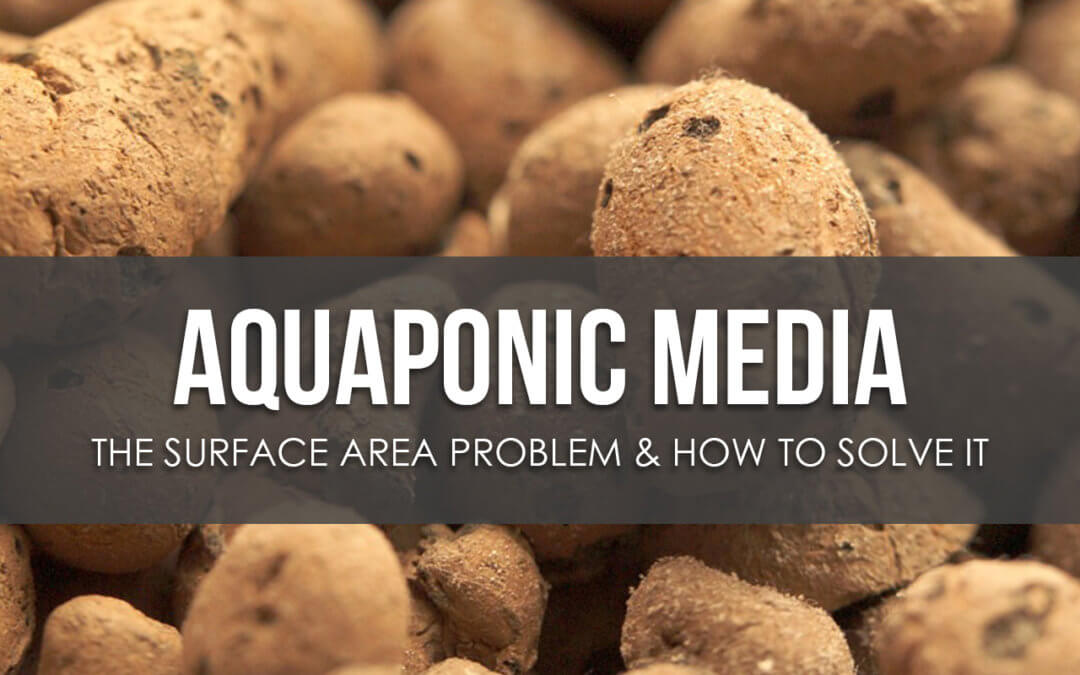Surface area is the soul of a good aquaponic system
Aquaponic growers are some of the most innovative folks in the world; they’ve used just about everything as growing media! From river rock, expanded clay, expanded ore (perlite), to naturally sourced peat or coco coir, and even scrapped materials like packing popcorn. Growers have found ways to grow in the most unlikely aquaponic media.
We’ve been using different media for years, and have a few favorites of our own. Before I tell you what our favorite is, you have to understand the general constraints, tradeoffs, and benefits surrounding media types.
Different aquaponic media come with different benefits and challenges. Commercial growers especially need to be aware of these so that they can plan costs accordingly.
Although pros and cons can include traits like cost, convenience, weight, water movement, plant anchoring, and many more, there is one trait that seems to control many of these: surface area.
Most traits and functions are either directly or indirectly linked to surface area
Surface area is so integral to the engines of the aquaponic system—the microbes—that it deeply affects other functions. There are two things in particular that are directly affected by the amount of surface area.
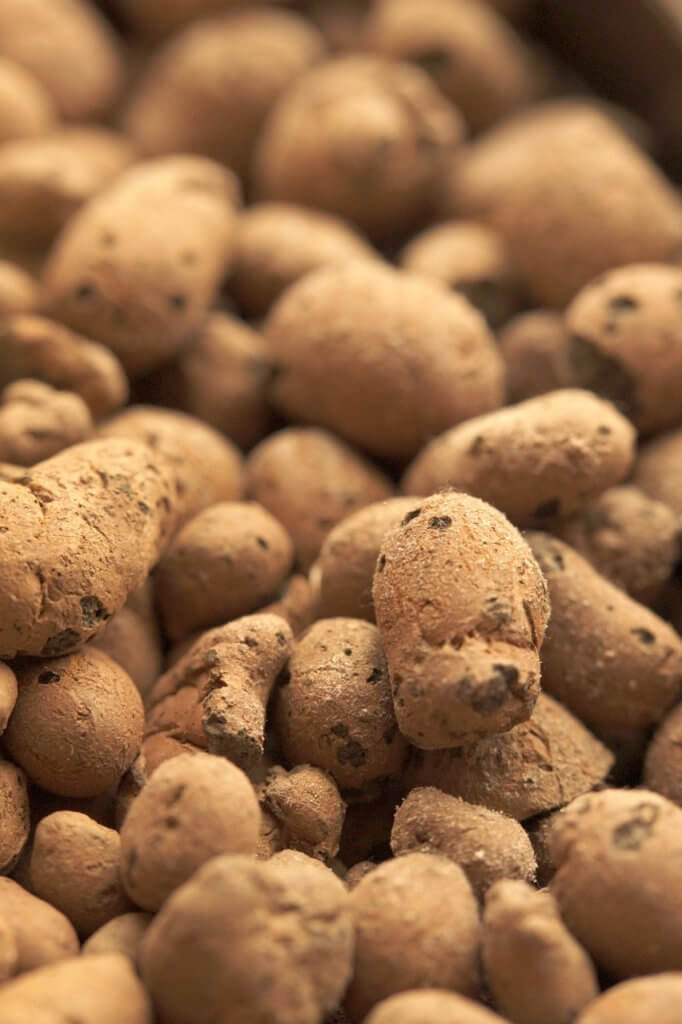 Nutrient cycling is the conversion of ammonia to nitrates and is key to plant health. Cycling is powered by nitrifying bacteria. Surface area acts as habitat for those bacteria and can be directly linked to the speed and amount of nutrient cycling that occurs in the system.
Nutrient cycling is the conversion of ammonia to nitrates and is key to plant health. Cycling is powered by nitrifying bacteria. Surface area acts as habitat for those bacteria and can be directly linked to the speed and amount of nutrient cycling that occurs in the system.
When it’s hosting microbes, the surface area is called biological surface area, or BSA. BSA is one of the direct benefits of high surface area. Systems with high BSA recover from disturbance better, hold pH better, and respond to feeding faster.
Another direct benefit to surface area is cation exchange capacity (CEC). CEC is the ability of media particles to hold exchangeable cations. (Cations are positively charged atoms in a solution.) Since many of the nutrients that crops need are salts, which dissociate in water, cation holding equates to nutrient holding for many nutrients.
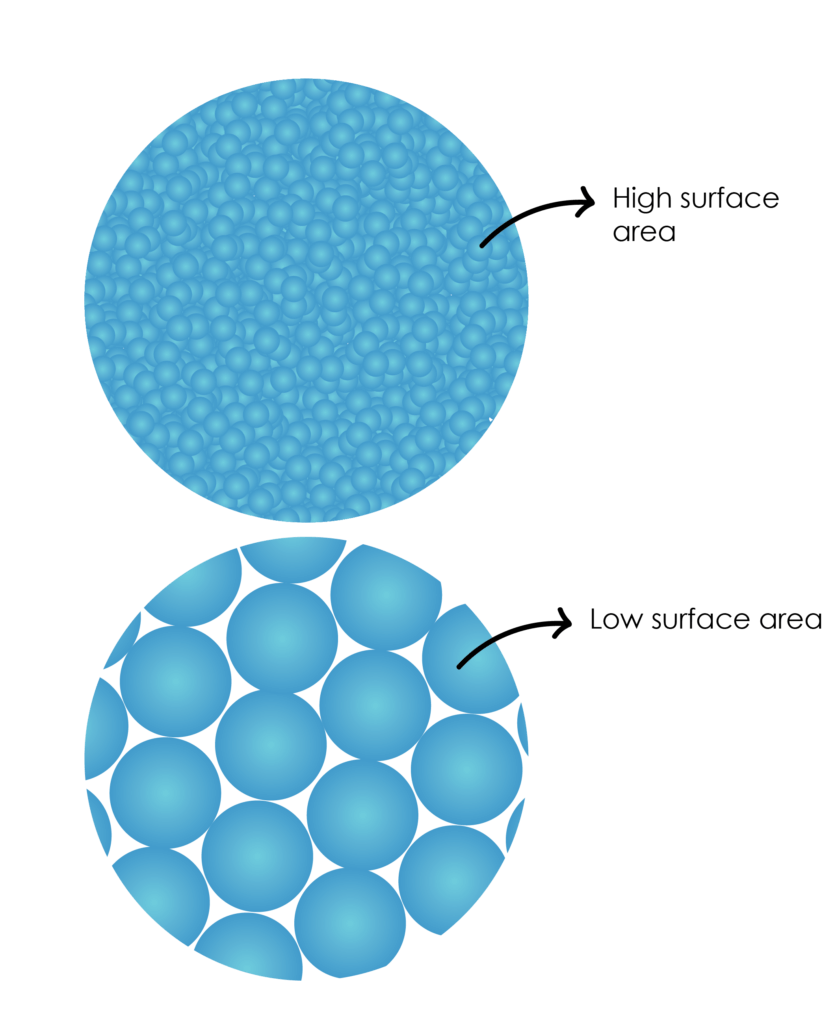 Good CEC means less fluctuation in nutrient levels. It can also provide a buffer against acidification. This keeps pH from dipping quickly.
Good CEC means less fluctuation in nutrient levels. It can also provide a buffer against acidification. This keeps pH from dipping quickly.
Surface area affects the aquaponic system indirectly as well. Surface area has an inverse relationship to particle size; the larger the particle, the less surface area it has. The smaller the particle, the more surface area it has.
The problem is that both large particles and small particles have benefits and challenges.
Large particles like hydroton are easier to move and plant with, easier to keep clean, and have great water movement. The pore space between particles is so large that solids rarely gather and cause blockage or anaerobic zones.
Small particles offer much higher BSA and CEC but can be more difficult to work with. Smaller pore space means that solids can accumulate, which can lead to anaerobic decomposition. Sometimes smaller particles can become compacted as well. This introduces a whole new set of issues with planting and maintenance.
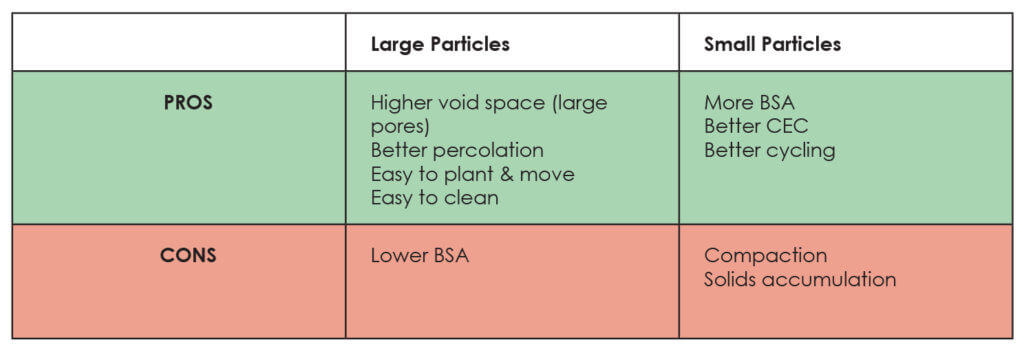
Because the benefits of each particle size are playing on different sides, growers can’t get all of the benefits in one aquaponic media type. They have to pick and choose the benefits they get.
Fibers are the exception.
Here’s why:
Fibers ignore the normal surface area trade-off
Fibers turn the competing benefits of particle size and surface area on their head:
- They have extremely high BSA, which hosts microbes good for cycling and increases cation holding capacity.
- They can come in one piece, which is simple to pick up and move
- They can be quite tough, easy to clean and difficult to compact
- They can have high void space, meaning good water movement
- They catch solids without accumulating them, meaning they can act as a filter without causing anaerobic zones
- They can be natural or synthetic, created from recycled plastic, and reusable for many years.
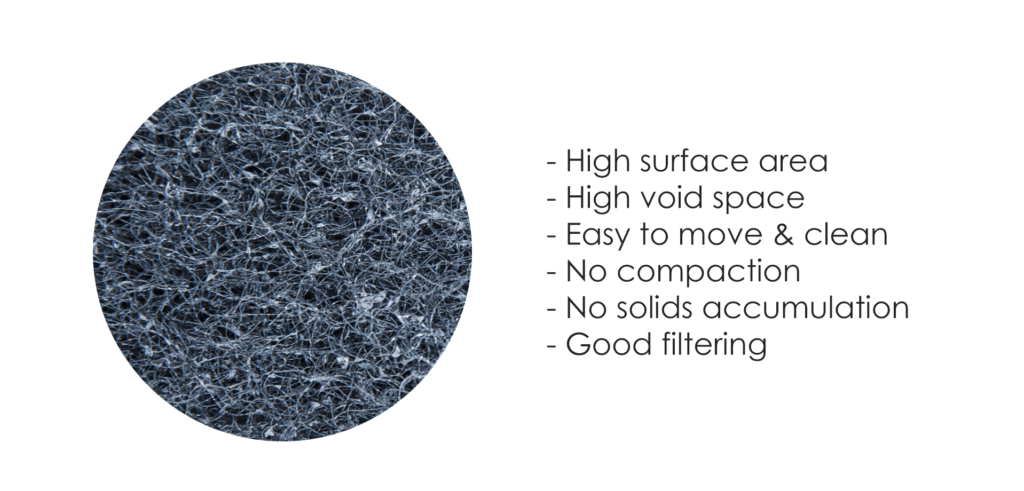
As you can see, fibers are the best fit for many systems. It’s likely that fibers are even the best choice for you, although there are a few situations where fiber is not appropriate.
Tubers and root crops don’t always grow well in fibers, and DWC (deep water culture) doesn’t require any media. Even in these systems, however, growers should be deliberately adding biological surface area.
Before choosing a media, choose a design.
Media choice depends on your growing technique and needs. To explore system design and more in-depth planning, take the Aquaponics Design Mini-Course.
This course is 2 hrs and 40 minutes and covers basic design, pros, and cons of:
- Deep Water Culture (DWC)
- Media Beds
- Bato Buckets
- ZipGrow
- Aeroponics
- Decoupled Systems

